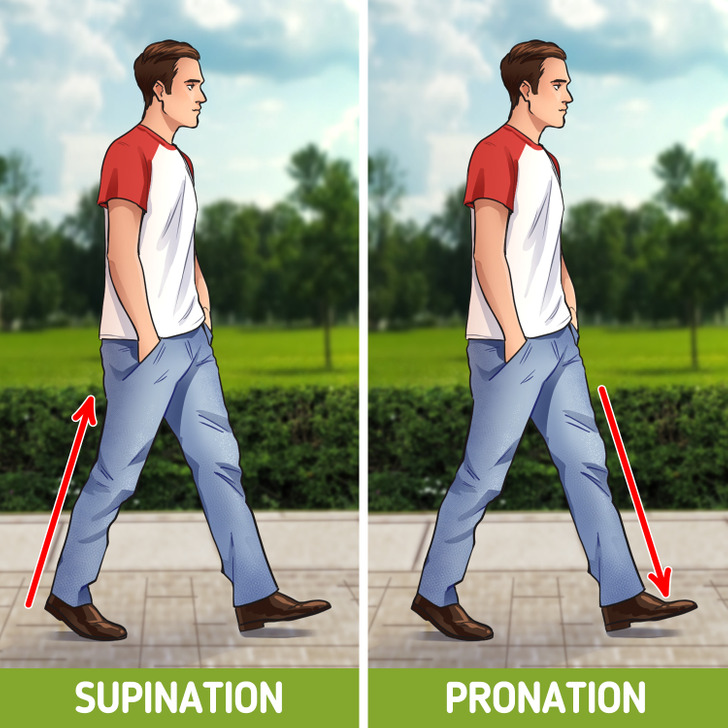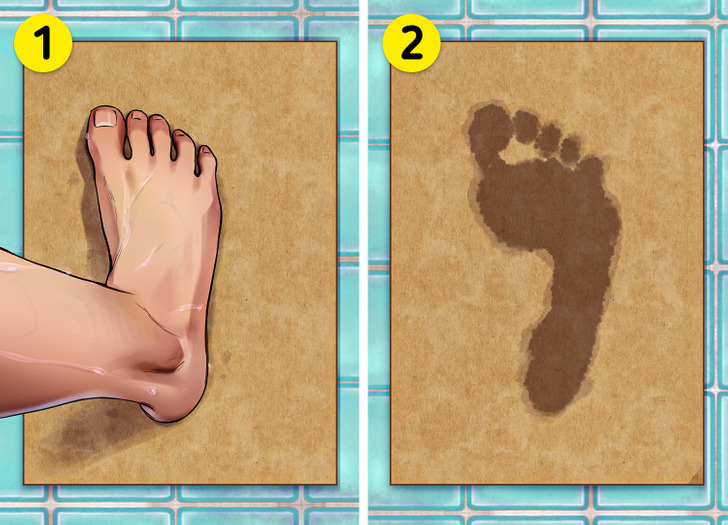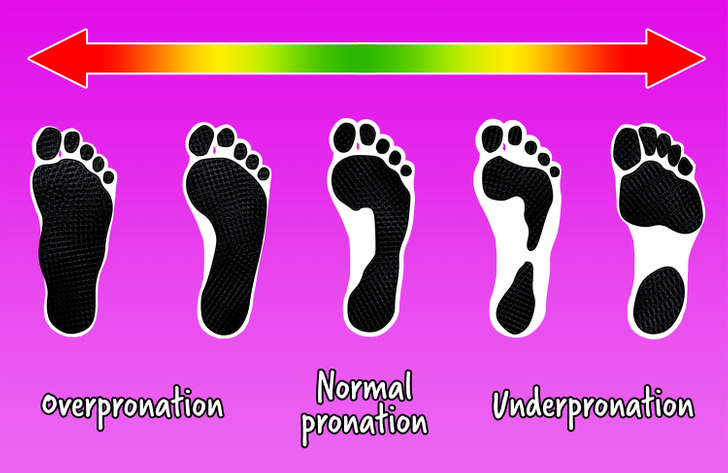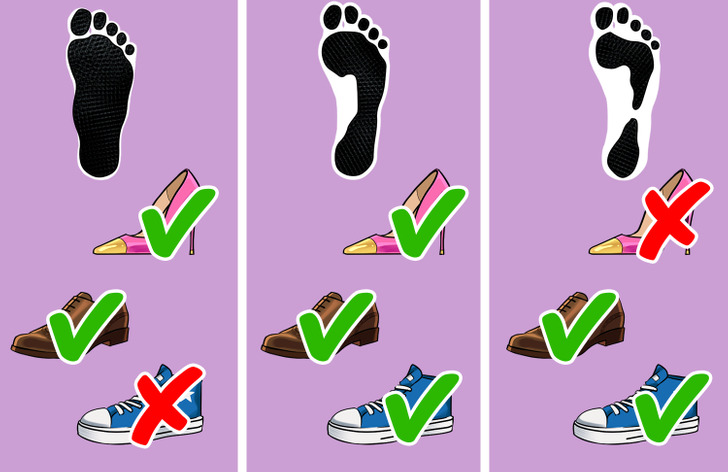What Different Footprints Mean
In addition to fingerprints, footprints also contain information about a person. A simple footprint may tell us whether a person does or doesn’t have problems with their feet, how correct their weight distribution is, and if there’s a risk of developing certain health problems.
5-Minute Crafts has made a detailed guide to help you learn to “read” footprints.
❗ Important: This article is for informational purposes only and doesn’t replace the recommendations of experts.
Pronation and supination

In order to understand how correct your feet are, you need to learn the basic terms. Pronation and supination are the foot motion phases that help us complete the gait cycle.
Pronation is a natural movement of the foot inward for impact absorption during landing.
Supination is the opposite of pronation, when the foot goes outward, taking its natural position. It happens when the heel starts leaving the ground.
So, during walking and running, our feet do several important tasks:
- They adapt to the surface, giving you good traction.
- They absorb the shock when landing.
- They help push off the ground to make the next step.
So, if your feet are tilted one way or the other, the weight distribution is uneven, which may lead to aches in the feet, knees, buttocks, and even your back.
How to determine your foot type

The easiest way to evaluate the condition of your feet is to wet them in pure water and step on a sheet of cardboard. You can also paint your foot and step on a sheet of white paper. Stand straight to get the right data.
Look at the footprint carefully. If you have normal pronation, you will see your heelprint connected to the toeprints with about half of your foot width.
If you see your heelprint connected with the full width of your foot, it likely means you are overpronated. If you have a high arch, you’ll see the ball and heel of your foot, but you’ll barely see any of the foot’s middle part in the print — this means you have underponation.

What it means

❗️ You should consult an expert if you suspect you have orthopedic problems.
If the center of gravity is displaced to the outside or inside part of the foot, the weight is distributed unevenly. For example, overpronation may lead to aches in the heels, calves, knees, and back. To adjust the weight distribution, you should choose the right shoes.
- There are no limitations for normal pronation — choose any shoes you feel comfortable in.
- For a high arch (underpronation), it might be dangerous to wear high heels. It’s better to wear lace-up shoes on flat soles or a small, stable heel.
- For a low arch (flat foot), it’s better to wear shoes on heels. You should also use special insoles.